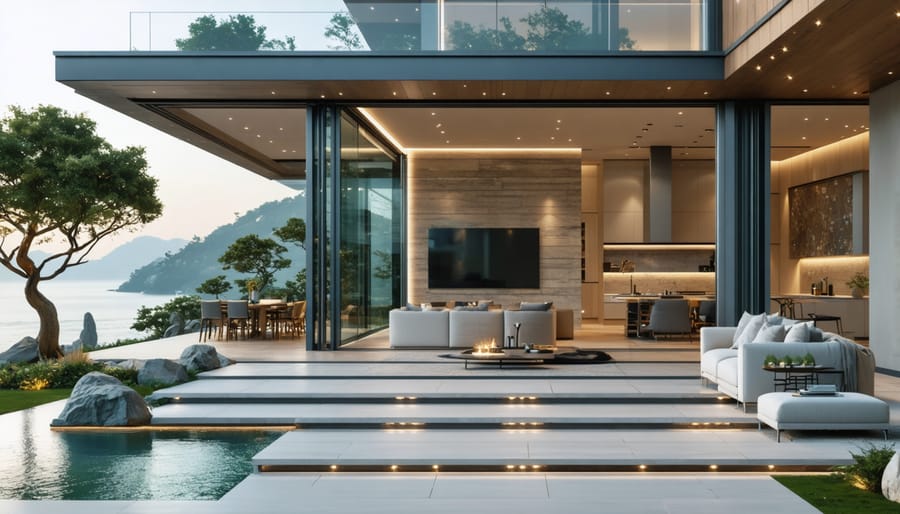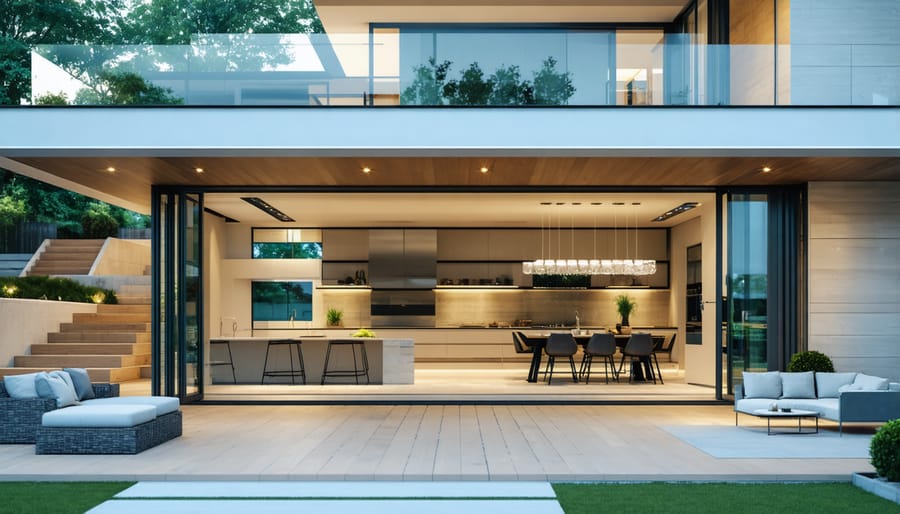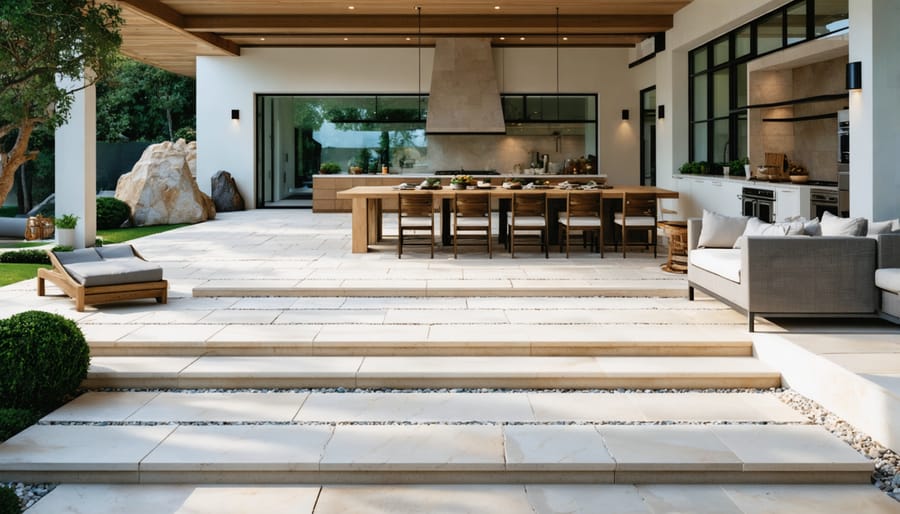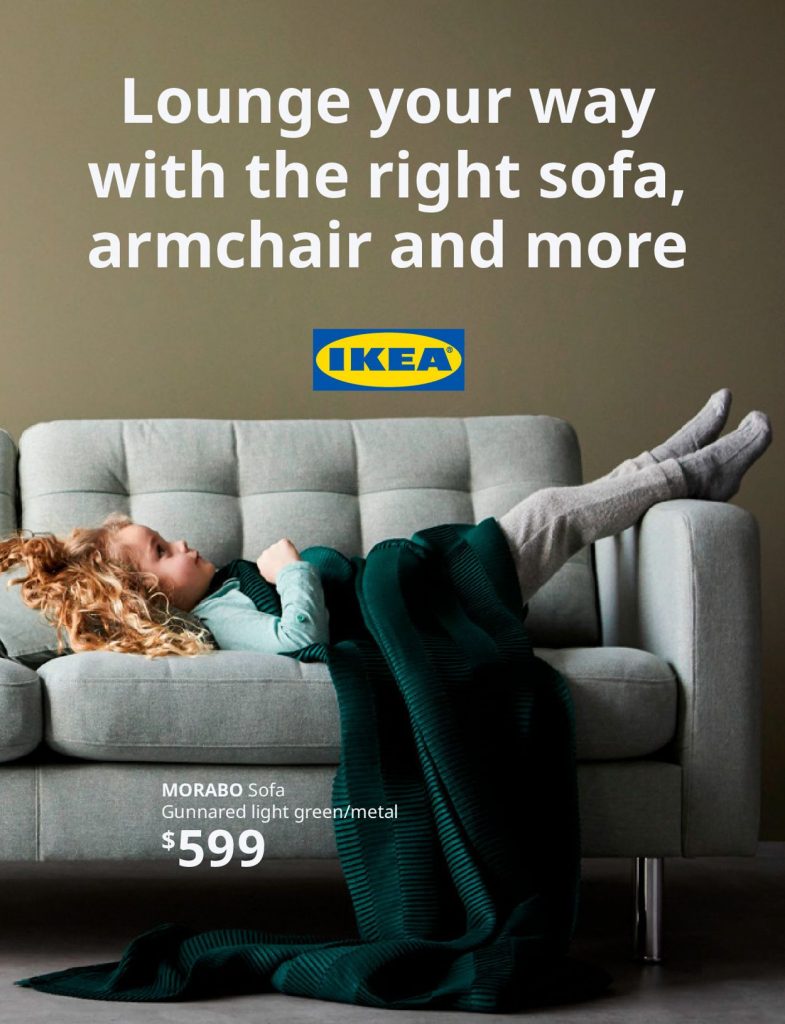
Seamless Living: How to Create Stunning Indoor-Outdoor Flow in Your Home
Transform your living space by breaking down the barriers between interior and exterior zones. Modern indoor-outdoor design revolutionizes how we blend your home’s style through seamless transitions and thoughtful integration. Strategic placement of floor-to-ceiling windows and sliding glass doors creates natural flow, while consistent flooring materials extending from inside to outside spaces establish visual continuity. Weather-resistant furniture and fabrics bridge the aesthetic gap, enabling sophisticated living areas that transition effortlessly between indoors and out.
Smart lighting design illuminates both spaces cohesively, with adjustable systems that respond to natural light changes throughout the day. Incorporate natural elements like indoor plants and water features to echo outdoor landscapes, while choosing complementary color palettes that reflect nature’s harmony. Temperature control solutions, including retractable awnings and heated outdoor areas, ensure year-round comfort and functionality in these unified spaces.
This innovative approach to home design doesn’t just expand your living area—it creates a harmonious environment that maximizes both comfort and property value while responding to our growing desire for connected, versatile living spaces.
The Art of Transitional Spaces
Sliding and Folding Door Systems
Creating a seamless flow between indoor and outdoor spaces starts with choosing the right door system. Modern sliding and folding doors offer remarkable solutions that blur the boundaries between interior and exterior living areas while providing practical benefits year-round.
Large sliding glass doors, particularly multi-panel systems, create dramatic openings that invite natural light and views into your home. These doors can span entire walls, and when fully opened, they essentially disappear, creating an uninterrupted connection to your outdoor space. Look for options with minimal frames and energy-efficient glass to maintain comfort in any weather.
Bi-fold doors offer another elegant solution, accordion-folding to one or both sides to create wide openings. These systems are particularly effective for smaller spaces where traditional sliding doors might be impractical. When closed, they maintain a clean, contemporary look while still offering excellent visibility to the outdoors.
For ultimate flexibility, pocket doors that slide completely into the wall create the most seamless transition. Though they require more complex installation, the result is worth considering for major renovations or new construction projects.
Consider features like weather-stripping, thermal breaks, and multi-point locking systems when selecting your door system. These elements ensure your doors perform well in terms of energy efficiency and security while maintaining their aesthetic appeal.

Flooring Continuity
Creating a seamless flow between indoor and outdoor spaces starts with your flooring choices. The key is selecting materials that not only look great in both areas but can also withstand varying conditions. Natural stone like slate or travertine works beautifully across both spaces, offering durability and timeless appeal while maintaining visual continuity.
Porcelain tiles have become increasingly popular for their versatility and resilience. They come in various styles, including wood-look options, and can handle both interior comfort and exterior elements. For a more budget-friendly approach, concrete flooring with weather-resistant sealants provides a modern, industrial look that transitions smoothly from inside to out.
When selecting your flooring, consider these practical tips: choose slip-resistant materials for outdoor areas, ensure proper drainage for exterior sections, and opt for UV-resistant materials to prevent fading. The color and pattern should flow naturally between spaces – using the same material in slightly different finishes can create subtle distinction while maintaining unity.
For climate-specific solutions, consider materials like composite decking that can withstand extreme weather while complementing your indoor flooring. Whatever material you choose, proper installation and regular maintenance are crucial for longevity. Remember to account for threshold transitions, ensuring they’re both aesthetically pleasing and safe for foot traffic.

Harmonious Material Selection
Weather-Resistant Options
When designing indoor-outdoor spaces, selecting the right weather-resistant materials is crucial for longevity and maintenance. Start with performance fabrics like Sunbrella or Perennials for upholstery, which resist fading, staining, and mildew while maintaining a luxurious feel. For furniture frames, opt for powder-coated aluminum, teak, or high-quality synthetic wicker that can withstand various weather conditions.
Flooring choices should prioritize slip resistance and durability. Porcelain tiles, particularly those with a textured finish, work beautifully in both indoor and outdoor spaces. Natural stone like slate or granite offers timeless appeal and excellent weather resistance, while composite decking materials provide a wood-like appearance without the maintenance concerns.
For walls and structural elements, consider materials like treated cedar, fiber cement siding, or stucco that can handle moisture exposure. Modern composite materials and marine-grade stainless steel hardware ensure lasting durability for built-in features and architectural elements.
Don’t forget about decorative elements – UV-resistant artwork, all-weather rugs, and LED lighting fixtures designed for outdoor use can create a cohesive look while standing up to environmental challenges. These carefully chosen materials will help maintain your space’s beauty and functionality throughout the seasons.
Color and Texture Coordination
Creating a seamless flow between indoor and outdoor spaces starts with coordinating colors and textures that complement each other naturally. Choose a cohesive color palette that draws inspiration from both environments, such as earthy tones, natural greens, or coastal blues. These colors can be carried through both spaces using paint, textiles, and decorative elements.
Consider using similar materials and finishes to create visual continuity. For example, if you have wooden flooring inside, opt for weather-resistant decking in a similar tone outside. Match your interior wall texture with exterior finishes, like carrying a stone accent wall from the living room through to the outdoor patio.
Layer textures strategically to create depth and interest while maintaining harmony. Indoor rugs can be paired with outdoor versions in similar patterns, while throw pillows and cushions can feature weatherproof fabrics that mirror your interior soft furnishings. Plants play a crucial role in this coordination – use similar species both inside and out to create a natural bridge between spaces.
For a polished look, repeat key design elements across both areas. If you have metal light fixtures inside, choose outdoor lighting with similar finishes. This attention to detail in color and texture helps create a cohesive living space that flows naturally from indoors to outdoors.
Furniture and Decor Strategy
Versatile Furniture Solutions
When designing an indoor-outdoor space, choosing the right furniture can make or break your vision. The key is selecting pieces that not only look great in both settings but can also withstand various environmental conditions. Materials like teak, powder-coated aluminum, and all-weather wicker offer excellent durability while maintaining a sophisticated appearance that works just as well in your living room as it does on your patio.
Consider modular furniture sets that can be easily reconfigured based on your needs. These versatile pieces allow you to create different seating arrangements for both indoor gatherings and outdoor entertainment. Look for weather-resistant fabrics and cushions that feature quick-dry technology and UV protection – these will maintain their appearance regardless of where you place them.
Storage ottomans and multi-functional tables are particularly valuable in these spaces. They can serve as extra seating, storage solutions, or serving surfaces while seamlessly transitioning between indoor and outdoor areas. For a cohesive look, choose pieces with neutral colors and classic designs that complement both environments.
Don’t forget about mobility – furniture with hidden wheels or lightweight construction makes it easy to move pieces between spaces as needed. This flexibility is especially useful during parties or when weather conditions change unexpectedly. Remember to invest in furniture covers for pieces that will spend significant time outdoors, extending their lifespan and protecting your investment.

Lighting and Ambiance
Lighting plays a crucial role in creating a seamless flow between indoor and outdoor spaces. The key is to develop an outdoor lighting design that complements your interior illumination while maintaining functionality in both areas.
Start by layering your lighting in both spaces. Use a combination of ambient, task, and accent lighting to create depth and versatility. Consider installing dimmer switches to adjust light levels throughout the day and evening, helping maintain visual continuity as natural light changes.
For indoor areas near transition points, incorporate wall sconces or recessed lighting that mirrors the style of your exterior fixtures. LED strip lighting along steps or underneath handrails can provide both safety and aesthetic appeal while creating a unified look.
In covered outdoor areas, install ceiling fans with integrated lights that match your indoor fixtures. Use weather-resistant pendants or chandeliers to echo interior styling while ensuring durability. Smart lighting systems can help coordinate both zones, allowing you to control all lights from a single app or switch.
Remember to consider light temperature when selecting bulbs. Aim for consistent color temperatures (typically 2700-3000K for a warm, welcoming feel) across both spaces to maintain visual harmony. This attention to detail will help create an inviting atmosphere that flows naturally from inside to out.
Smart Technology Integration
Climate Control Solutions
Creating a comfortable weather-ready living space requires thoughtful climate control solutions that work seamlessly across your indoor and outdoor areas. Start with retractable awnings or pergolas to provide flexible shade during hot summer days. These can be paired with outdoor ceiling fans to keep air circulating and create a pleasant breeze.
For cooler seasons, consider installing infrared heaters mounted on walls or ceilings – they’re energy-efficient and provide targeted warmth without heating the air itself. Portable propane heaters offer another versatile option for outdoor heating, while built-in fireplaces or fire pits create both warmth and ambiance.
Smart climate control systems can help manage temperatures across both zones efficiently. Install weatherproof outdoor thermostats that connect to your home’s smart system, allowing you to adjust settings from your phone. For humid areas, outdoor-rated dehumidifiers can make your space more comfortable, while misting systems provide refreshing cooling during peak summer hours.
Don’t forget about wind protection – retractable screens or glass panels can block unwanted drafts while maintaining views and connection to nature. These solutions help create a comfortable environment year-round, extending your living space regardless of weather conditions.
Entertainment Systems
Modern entertainment systems have revolutionized outdoor living spaces, allowing you to enjoy your favorite media while maintaining the natural ambiance. Weather-resistant TVs and speakers are specifically designed to withstand the elements, offering crystal-clear picture and sound quality even in bright sunlight or light rain.
For optimal viewing, consider mounting your outdoor TV in a covered area to minimize glare and protect it from direct exposure to weather. Look for displays rated for outdoor use with anti-glare technology and higher brightness levels. Many models now come with smart features, letting you stream content directly without additional equipment.
Sound systems should be strategically placed to create even audio coverage throughout your outdoor space. Consider installing weatherproof in-ceiling speakers under covered patios or rock-shaped speakers in garden areas for a more discreet look. Modern wireless systems make installation easier and allow for seamless control from your smartphone or tablet.
For evening entertainment, pair your system with smart lighting that can be synchronized with your media. This creates an immersive experience whether you’re watching movies, hosting a game day party, or simply enjoying background music during outdoor dining.
Remember to protect all electrical components with proper weatherproof covers and ensure all wiring meets outdoor safety codes.
Creating a seamless indoor-outdoor living space is more than just a design trend – it’s a transformative approach that can enhance your lifestyle and add significant value to your property. Throughout this guide, we’ve explored the essential elements that make these spaces work, from choosing the right materials and furniture to implementing smart technological solutions.
Remember that successful indoor-outdoor design relies on thoughtful transitions, whether through consistent flooring materials, coordinated color schemes, or strategic furniture placement. The key is to create a natural flow that makes both spaces feel like they belong together while maintaining their unique characteristics.
By incorporating proper lighting, weather-resistant materials, and versatile furniture pieces, you can create an inviting space that works year-round. Smart technology integration can further enhance your experience, with automated climate control and entertainment systems that adapt to your needs.
Don’t feel overwhelmed by the prospect of transforming your space. Start with small changes – perhaps begin with a cohesive color palette or invest in multi-purpose furniture. As you become more comfortable with the concept, you can gradually implement more significant changes, like installing sliding glass doors or creating an outdoor kitchen.
The beauty of indoor-outdoor design lies in its flexibility. Whether you have a sprawling backyard or a modest balcony, there are countless ways to blur the lines between interior and exterior spaces. Focus on creating zones that reflect your lifestyle and serve your specific needs, whether that’s entertaining guests, enjoying quiet moments with family, or working from home in a refreshing environment.
Take the first step today in transforming your space. Start by assessing your current layout and identifying areas where you can create better indoor-outdoor connections. With careful planning and thoughtful execution, you can create a harmonious living environment that brings the best of both worlds together, enhancing your daily life and creating lasting value for your home.
